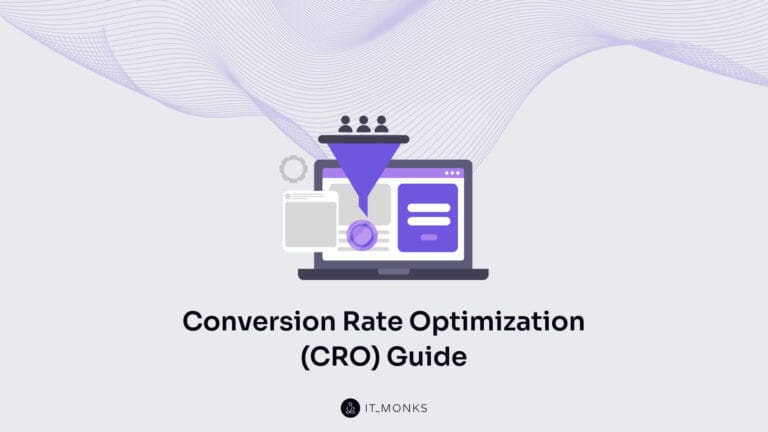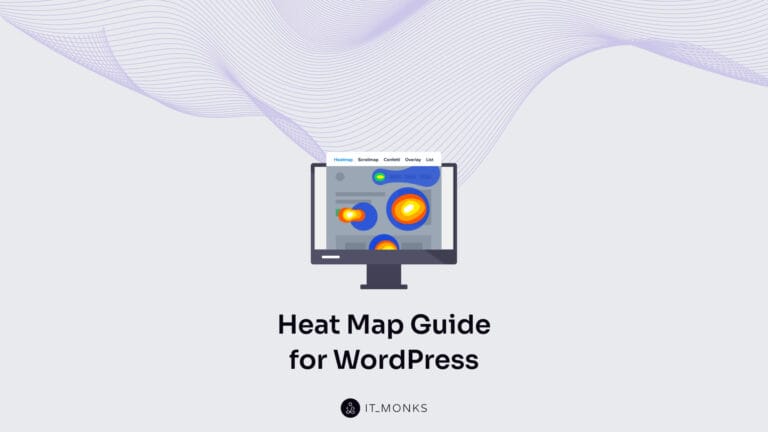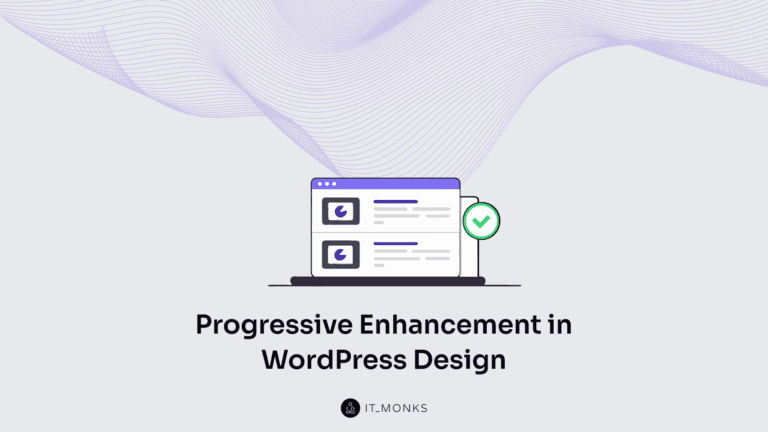10 Enterprise Website Examples
Table of Contents
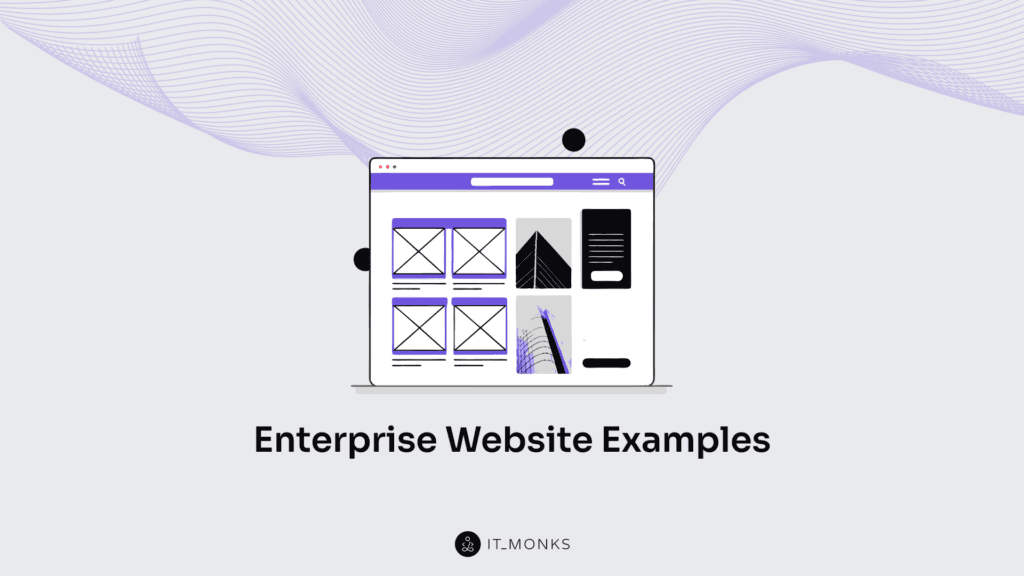
An enterprise website is an online site developed for large-scale businesses, featuring advanced functionalities that support complex operations and high-tech applications.
These websites serve a variety of purposes, such as showcasing company information, presenting products and services, maintaining brand consistency, generating leads, safeguarding sensitive data with top-notch security, and optimizing for search engines to enhance visibility.
To ensure enterprise websites fulfill their objectives, businesses prioritize creating functional and user-friendly designs.
However, even enterprise websites can encounter design challenges similar to those of smaller-scale websites. These include issues related to usability, responsiveness, consistency, conversion optimization, SEO, scalability, security, multimedia integration, and accessibility.
Such challenges can be faced even by globally recognized brands. A practical way to address these hurdles is by examining successful enterprise website examples, identifying their strengths, and learning how they overcome common design obstacles.
This article reviews 10 world-known enterprise website examples and provides tips on creating an effective enterprise website design.
1. Salesforce
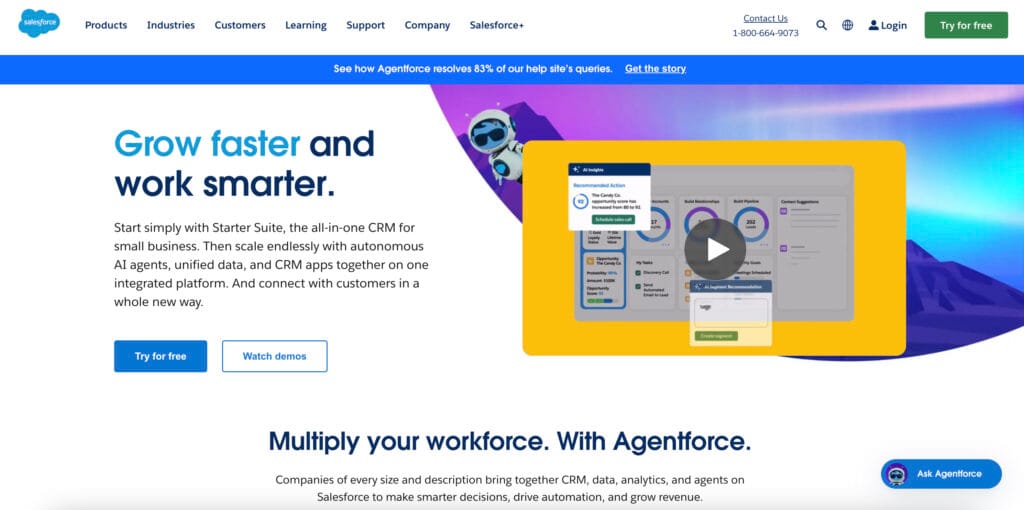
Salesforce is a global leader in customer relationship management (CRM) solutions, offering a comprehensive suite of cloud-based tools that empower businesses to manage customer interactions, streamline workflows, and drive sales growth.
Salesforce is one of the vivid enterprise website examples that exemplifies a user-centered approach, combining sleek visuals with high functionality.
Its homepage immediately engages visitors with a clean, professional design, featuring dynamic multimedia elements like animated graphics and embedded videos to showcase product offerings.
A well-structured menu provides seamless navigation, ensuring users can easily access specific tools, services, or resources tailored to their needs.
Key standout features include:
- Interactive product demos that allow users to explore solutions in real time.
- Personalized content recommendations based on user behavior and interests.
- Intuitive CTAs that guide visitors toward signing up for trials or contacting sales representatives, optimizing conversion rates.
2. Apple
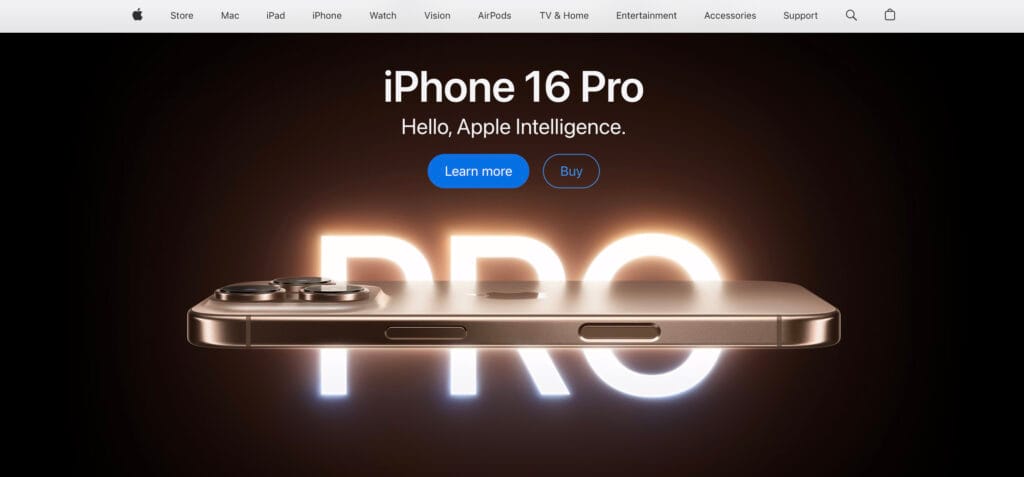
Apple is a globally renowned technology company that designs and manufactures innovative hardware, software, and services. Known for its iconic products like the iPhone, Mac, and Apple Watch, Apple delivers cutting-edge technology solutions that blend performance with aesthetic appeal.
Apple is one of the best enterprise website examples featuring a minimalist yet impactful design.
It leverages clean lines, ample white space, and high-quality imagery to emphasize its products. Interactive elements, such as scroll-triggered animations and dynamic product showcases, create an engaging user experience.
Navigation is straightforward, with a persistent header that provides quick access to product categories, support, and the Apple Store.
Key standout features include:
- 360-degree product views for an immersive browsing experience.
- Customizable product configurations directly on the site.
- Streamlined checkout process that simplifies online purchases.
3. Microsoft
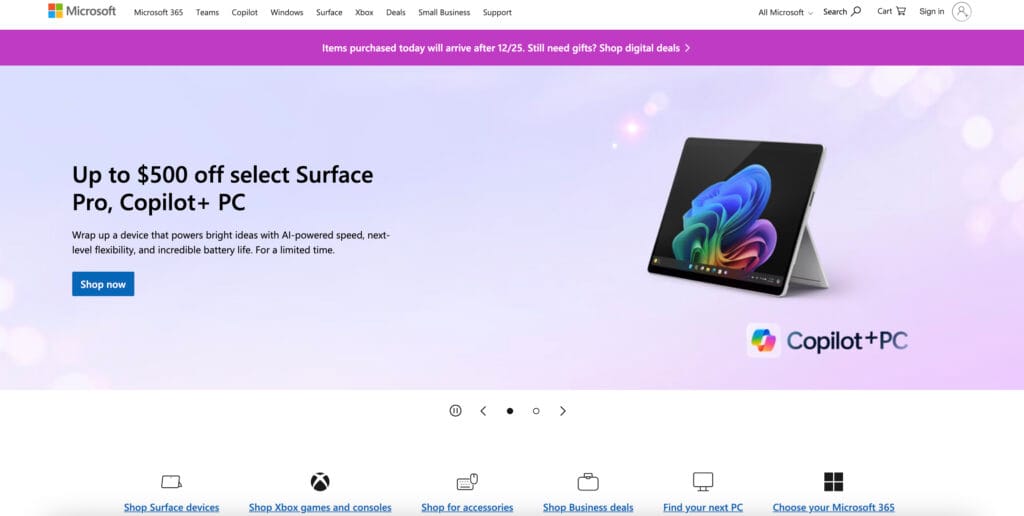
Microsoft is a global technology leader specializing in software, hardware, cloud services, and business solutions. Known for flagship products like Windows, Microsoft Office, and Azure, the company provides individuals and enterprises with tools to enhance productivity, communication, and innovation.
Microsoft’s website reflects its commitment to innovation and accessibility. Its modern design blends functionality with simplicity, showcasing Microsoft’s vast product offerings and services.
The homepage employs a modular layout, ensuring users can easily discover relevant content, from software solutions to hardware products and cloud services.
Key standout features include:
- Dynamic content customization based on user preferences or region.
- Interactive product pages offering detailed insights and live demos.
- Centralized navigation that integrates all business units under a cohesive framework.
4. Tesla
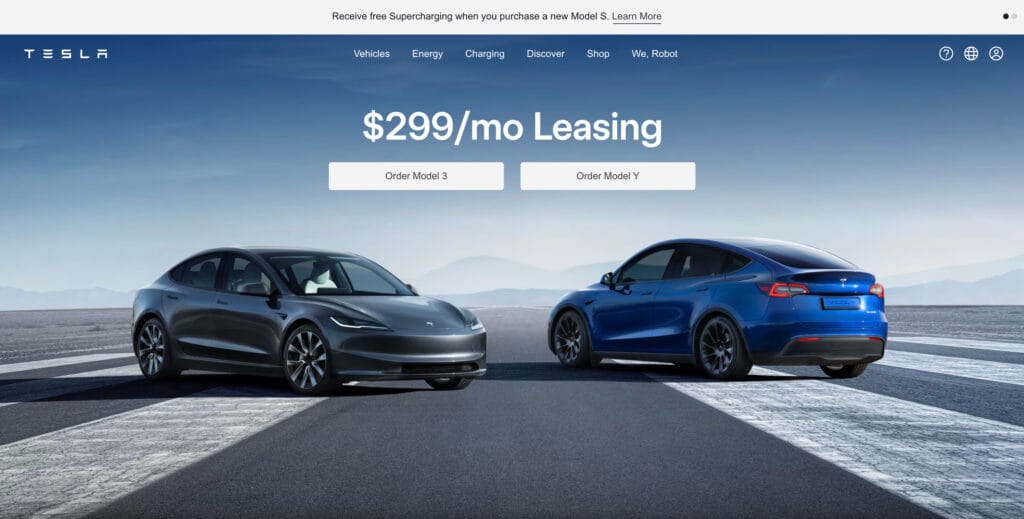
Tesla is a global pioneer in sustainable energy solutions, specializing in electric vehicles (EVs), solar energy products, and battery storage systems. Known for its groundbreaking innovations, Tesla is at the forefront of transforming the automotive and energy industries with a commitment to sustainability and cutting-edge technology.
Tesla’s website mirrors the brand’s innovation and simplicity. Its sleek design emphasizes Tesla’s products with high-quality visuals and a minimalist aesthetic.
The homepage is product-centric, immediately drawing attention to Tesla’s vehicles and energy solutions through dynamic imagery and bold typography.
Key standout features include:
- Interactive vehicle customization tools, allowing users to personalize their Tesla.
- Real-time updates on availability and estimated delivery timelines.
- Streamlined navigation with quick access to products, support, and company information.
5. Amazon Web Services
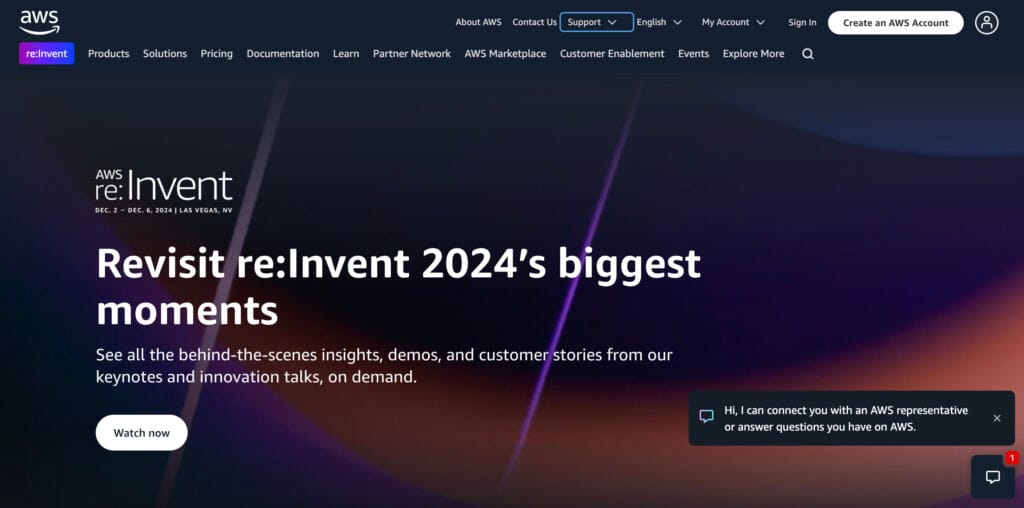
Amazon Web Services (AWS) is a subsidiary of Amazon providing on-demand cloud computing platforms and APIs to individuals, companies, and governments.
AWS’s website design focuses on delivering a wealth of clean and organized information. The layout prioritizes clarity and functionality, helping users easily find relevant cloud services, pricing, case studies, and documentation.
The homepage features prominent service categories and quick links to various resources, making navigating and accessing complex technical content easy for visitors.
Key standout features include:
- Dynamic search functionality allows users to find specific services or documentation quickly.
- An interactive pricing calculator enables users to estimate the costs of their cloud infrastructure needs.
- Service categorization breaks down AWS offerings into easy-to-digest sections for different industries and use cases.
6. IBM
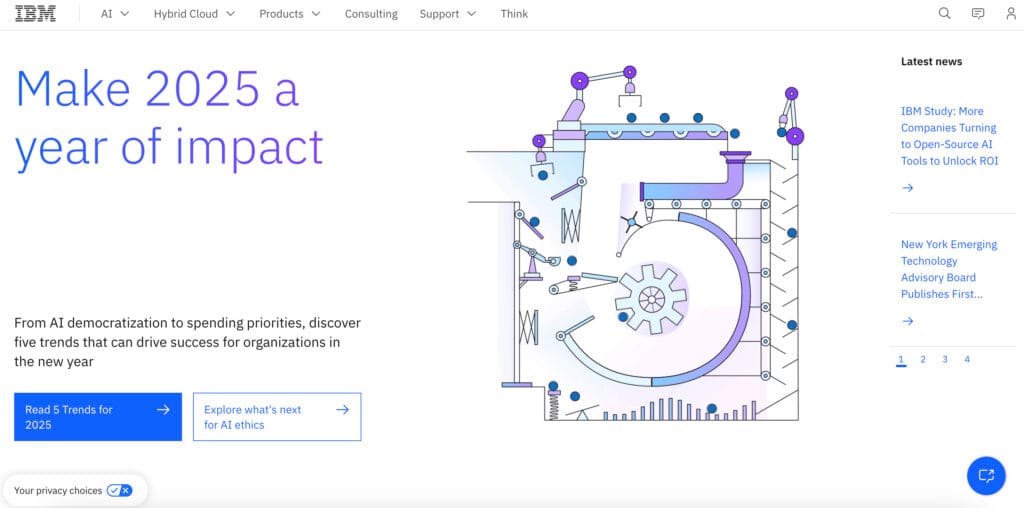
IBM (International Business Machines Corporation) is a global technology and consulting company known for its leadership in artificial intelligence, cloud computing, and enterprise solutions.
IBM’s website is designed to reflect the company’s advanced technological focus while maintaining a clean, professional look. It is structured to cater to a diverse audience, from business executives seeking enterprise solutions to developers and IT professionals looking for specific tools and resources.
The homepage features dynamic content that highlights IBM’s AI and cloud services, alongside powerful visual elements and calls-to-action to engage visitors.
Key standout features include:
- Interactive AI and cloud solutions demo allow visitors to explore IBM’s cutting-edge technologies in real-time.
- Personalized content delivery provides product recommendations and case studies based on user interests or past behavior.
- Clear focus on industry-specific solutions showcases tailored offerings for finance, healthcare, and government sectors, with dedicated sections for each.
7. Unilever
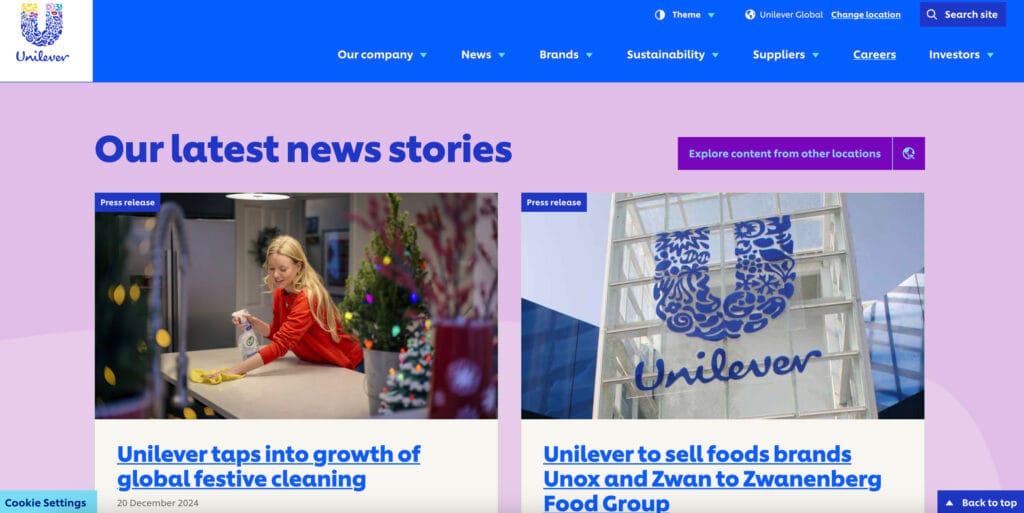
Unilever is a global consumer goods company, renowned for its wide range of products in categories such as food, beverages, cleaning agents, personal care, and health & wellness.
Unilever’s website is designed with a clean, modern layout that reflects its commitment to sustainability. This enterprise website example is structured to engage both consumers and corporate stakeholders, showcasing their brands, sustainability initiatives, and global impact.
It uses rich visual elements to highlight its corporate responsibility goals and community outreach, balancing brand storytelling with product information.
Key standout features include:
- The sustainability section showcases Unilever’s commitment to environmental and social issues with interactive graphics and progress tracking.
- Brand-focused content provides each brand with a dedicated space featuring product details, history, and values to engage users.
- Localized content adapts to different regions with tailored product details, news, and sustainability efforts.
8. Adobe
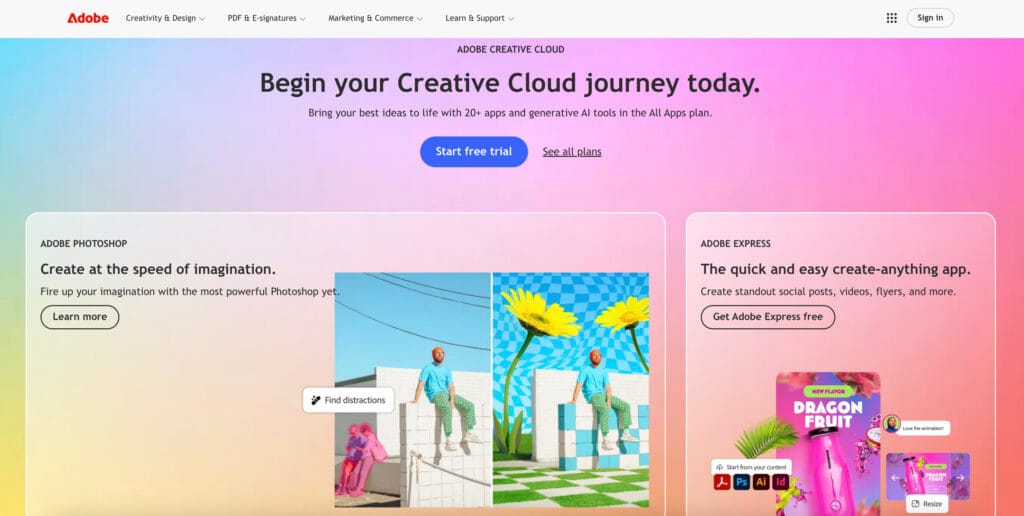
Adobe is a multinational company best known for its creative software products, such as Photoshop, Illustrator, and Adobe Acrobat.
Adobe’s website reflects the company’s focus on creativity and digital innovation with a visually striking and dynamic design. The website is designed to highlight Adobe’s diverse product offerings, such as Creative Cloud, Adobe Document Cloud, and Adobe Experience Cloud.
It showcases the potential of its products through compelling visuals, including images, animations, and user-generated content. The site features interactive elements that allow visitors to engage with product demos, view case studies, and access tutorials.
Key standout features include:
- Product-specific landing pages with detailed information, video tutorials, and a clear call to action (CTA), driving conversions for each specific product.
- Free trials and interactive demos to try out software before purchase, enhancing engagement and providing an interactive experience.
- Personalized experiences (personalized content) based on user behavior and preferences, recommending products and services tailored to the user’s needs.
9. Siemens
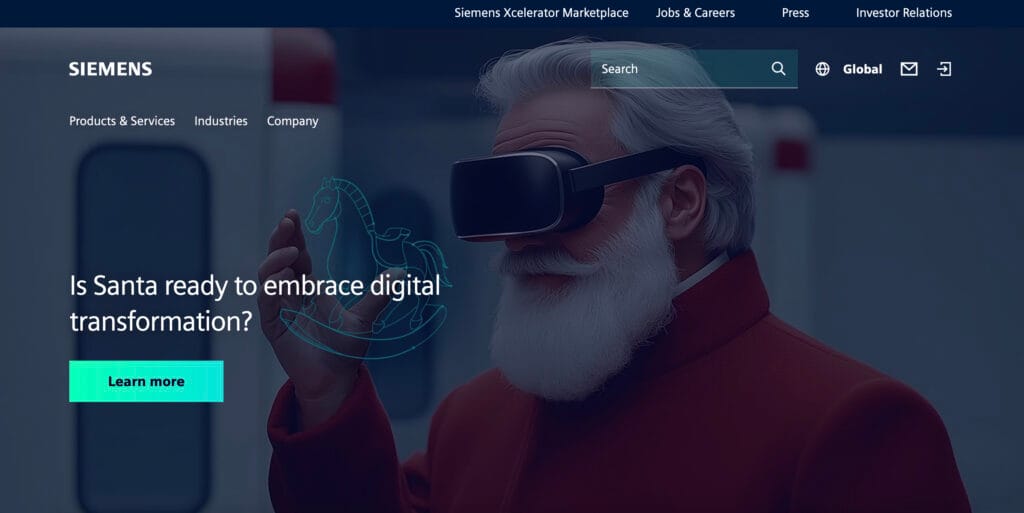
Siemens is a global technology company providing innovative solutions across various industries, including automation, digitalization, electrification, and healthcare.
Siemens’ website is designed to reflect its cutting-edge technology and commitment to innovation, making it one of the best enterprise website examples. The site features a clean, modern design with clear sections for different business areas, such as Siemens Digital Industries, Smart Infrastructure, and Healthcare.
This enterprise website example’s interactive elements and multimedia presentations are used to showcase their products and solutions, making complex technical information more accessible and engaging.
Key standout features include:
- Sector-specific pages for each industry, offering tailored solutions, case studies, and product highlights relevant to each sector.
- Product configurators and digital tools allow users to customize solutions according to their needs, providing a highly personalized experience.
- Interactive product showcases display their products in action, allowing users to understand better how these technologies work in real-world applications.
10. Hubspot
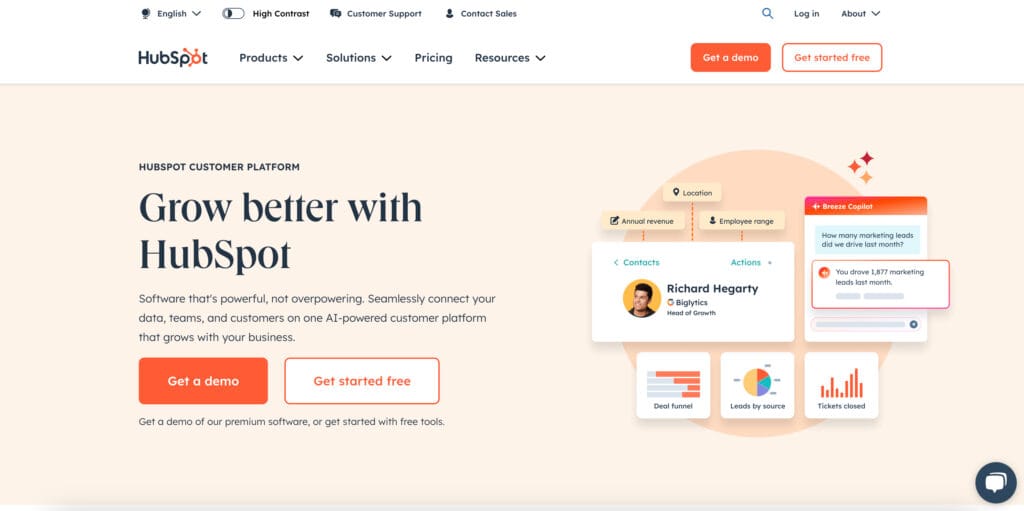
HubSpot is a leading customer relationship management (CRM) platform that provides marketing, sales, customer service, and content management tools.
HubSpot is one of the outstanding enterprise website examples focusing on clarity, ease of navigation, and user engagement. The layout features a clean, modern aesthetic with ample whitespace, making it easy for visitors to focus on key content.
The homepage is interactive, with various calls to action (CTAs) and sections that cater to specific audience needs (e.g., marketing professionals, sales teams, customer service agents).
Key standout features include:
- Personalized experiences based on visitor behavior and interests. For example, users are shown different CTAs depending on their previous interactions with the site.
- Lead-generation tools, like live chat, interactive demos, and lead capture forms, helping businesses convert website visitors into leads.
- Resource-rich pages, such as blogs, webinars, and guides, help users navigate HubSpot’s platform and learn how to leverage its tools for growth.
Tips for Enterprise Website Design
When designing a site by yourself or following the enterprise website examples listed above, consider these fundamental tips for creating a site that looks great and delivers outstanding performance, security, and user experience.
- Enhance usability. Design intuitive navigation, clear calls to action, and a well-organized layout to improve user experience.
- Ensure responsiveness. Make your site adaptable to mobile, tablet, and desktop devices for a consistent experience.
- Maintain consistency. Use uniform branding, colors, fonts, and messaging to build trust and clarity.
- Optimize conversions. Implement clear CTAs, lead forms, and compelling offers to drive conversions.
- Improve SEO. Use relevant keywords, meta tags, and structured data to boost search engine visibility.
- Support scalability. Build your site to handle growth in traffic, content, and future integrations.
- Prioritize security. Implement SSL encryption, security updates, and compliance with industry regulations (e.g., GDPR).
- Integrate multimedia. Add videos, images, and interactive elements, ensuring they are fast-loading and relevant.
- Ensure accessibility. Meet accessibility standards to ensure web design usability for all, including people with disabilities.
- Address foundational web design aspects. Integrating fundamental enterprise web design aspects creates a secure, functional, and visually engaging enterprise website that captivates and retains users.
How to Apply These Tips to Your Enterprise Website?
To apply these tips to your enterprise website, you can choose from several approaches based on your needs and resources, including custom enterprise design and development, website templates, enterprise CMS platforms, and web application frameworks.
Enterprise WordPress development offer full flexibility and tailored functionality, while templates and CMS platforms are quicker and more cost-effective. Web application frameworks are ideal for complex needs requiring advanced features and integrations.
Enterprise Website Templates vs Custom Design
Choosing between templates and custom designs for an enterprise website depends on your business size and needs.
Both options serve key purposes like showcasing company info, presenting products, maintaining brand consistency, generating leads, ensuring security, and optimizing for SEO.
Custom designs offer full flexibility, making them ideal for large businesses with complex needs. They control security, scalability, and SEO, ensuring a unique, tailored user experience. A custom design is essential for high-traffic sites or those with specific functionality.
Templates are great for small to mid-sized businesses with simpler needs. They are cost-effective, easy to implement, and SEO-friendly, though they may lack the customization and flexibility of a custom site. Templates are suitable for businesses with a limited budget or faster time-to-market.
Templates can provide an efficient and cost-effective solution for smaller enterprise websites or those in the early stages of growth.
However, for larger businesses, or those with unique needs in security, branding, and advanced features, custom design is the better option.
What are the Differences Between Enterprise and Small Business Web Design?
The main differences between enterprise and small business web design lie in scale, complexity, and functionality.
Enterprise websites have more pages, advanced navigation, and complex features like user management and data analysis tools. They require robust security, high-traffic optimization, and custom development to meet unique needs.
Small business websites, in contrast, focus on core features like product listings and contact forms, with simpler layouts and fewer security and performance demands.
Customization and integration further set them apart. Enterprise sites often require extensive custom development and integration with systems like CRM or ERP, while small businesses can use templates and need fewer integrations.
Contact
Don't like forms?
Shoot us an email at [email protected]
Send a Project Brief
You need to load content from reCAPTCHA to submit the form. Please note that doing so will share data with third-party providers.
More InformationYou are currently viewing a placeholder content from Turnstile. To access the actual content, click the button below. Please note that doing so will share data with third-party providers.
More InformationYou are currently viewing a placeholder content from Facebook. To access the actual content, click the button below. Please note that doing so will share data with third-party providers.
More InformationYou are currently viewing a placeholder content from Instagram. To access the actual content, click the button below. Please note that doing so will share data with third-party providers.
More InformationYou are currently viewing a placeholder content from X. To access the actual content, click the button below. Please note that doing so will share data with third-party providers.
More Information
